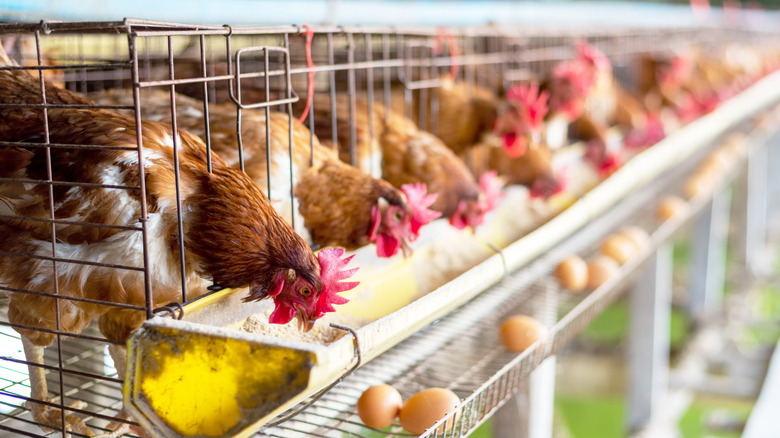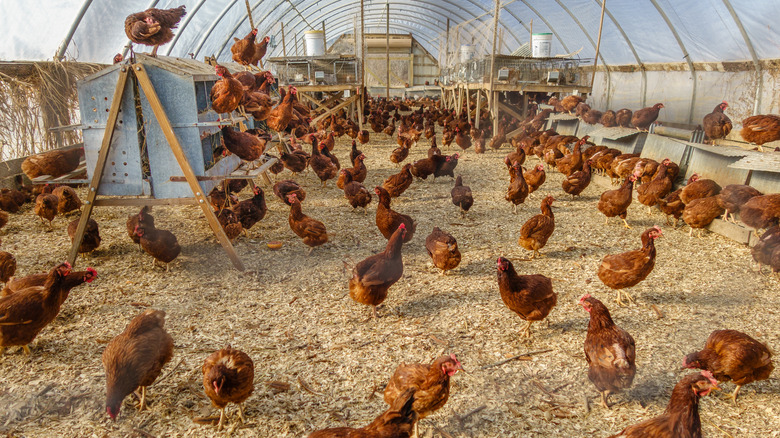Many Egg Producers Think Caged Hens Will Still Be Used In 2040
Eggs have seen better days. Recently, consumers looking for them at the grocery store have been hit with rising prices or encountered empty shelves where cheaper eggs used to be, says the New York Times. For example, ABC Action News reported that at one Florida Publix, buying a dozen eggs could cost $5.75 or more than $8.25. Since last year, the average wholesale price climbed from $1.33 to $4.33. It sounds like a particularly bad time for consumers looking for the cage-free variety, which has been scaled back due to soaring costs.
An array of issues have contributed to such price hikes. In 2021, Americans came out of the pandemic, and labor costs escalated, via the Bureau of Labor Statistics. The situation was exacerbated when the cost of fuel rose, per NBC News. A major reason eggs became more expensive was an outbreak of avian flu that spread throughout 2022. The first infections at a commercial facility were detected in February, notes the USDA. Once detected in a flock, all the exposed chickens are often killed to prevent the spread of the disease, explains the CDC. Fifty-seven million birds have been eliminated since the outbreak, says Forbes, and 4 million were cage-free hens.
February 2022 was also when AP News observed that cage-free eggs were gaining momentum with producers. But nearly a year later, it seems that economic conditions dampened the outlook for the coming years and possibly decades, according to a report by WATTPoultry.
Major grocers scaled back cage-free promises in 2022
Despite legislative efforts to expand the use of hens that aren't kept in cages, economic pressures have seemingly conspired against cage-free eggs. According to a report by WATTPoultry, grocery giants Walmart and Kroger are reversing course regarding promises to use fully cage-free eggs. This is partly because consumers have pivoted to cheaper eggs produced by caged hens. Producers expect that just over half (51.6%) of hens used to lay eggs in 2025 will be kept in cages.
Furthermore, new construction for cage-free housing is expected to drop off markedly from 2022 to 2023, notes WATTPoultry's report. Producers built cage-free housing for 86.3 million hens in 2022, but that number could plummet to just 13.64 million layers in 2023. Three-fourths of these same producers say some hens will still live in cages by 2040 based on current market forces.
Cage-free eggs have a history of higher costs. According to Poultry World, the USA Coalition for Sustainable Egg Supply looked at the cost of keeping hens in regular cages, roomier "enriched" cages, and aviaries in a 2010 study. It found that operational costs saw a 4% increase when using enriched cages while the aviary turned out to be 23% costlier. So at a time when eggs have accounted for some of the highest food inflation rates, the cage-free option may be harder to maintain. There are no easy solutions for high egg prices as demand, even after the holidays, remains high, according to Forbes.

